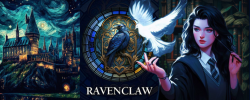When I was in school and about 9 years old, we had a weekly library period during which we could visit the school library, which housed books in thousands from heavy encyclopedias and reference books to children's stories and even magazines and newspapers. During this period, up until fifth or sixth grade, I used to read stories in the library, but from seventh grade onwards, I used it to study (which is a pity
Five Go to Mystery Moor was my favorite mystery adventure in the Famous Five series, the reason being that it had the most intriguing, awe -inspiring, dramatic, and suspenseful plot of the whole series. The name Mystery Moor matches the setting of the story which is also the source of the mysterious plot that goes well with the murky and foggy moor. The beginning of the story indicates a mysterious tale of the disappearance of a whole family of sand miners in the thick fog of the moor, following a railway derailment orchestrated by the gypsies on the moor, in the past. The plot thickens with a more modern mystery which involves strange, heavy thudding sounds on the moor at night. There are gypsies involved on the evil side of the story, but one particular gypsy boy to whom our protagonists are kind, breaks off from the gypsies to help his benefactors in the midst of the climax. It was a fascinating and descriptive taIe that kept me glued to the pages throughout the book, eager to read more, and I found myself unable to put it down even after the library period ended, so I was forced to borrow it for a week and take it home. It is one of those stories that I best remember out of the several stories of Enid Blyton that I have mostly forgotten. One of my favorite characters, as I remember, was George, the tomboyish sister among the children. Unlike the other tomboyish girl, Henry, she wasn't as rude and vain. Another of my favorite characters was Sniffer, the miserable gypsy boy who felt unloved in his own band, and showed signs of childish innocence capable of reforming into a better lifestyle. It was also intriguing that his only most important wish, despite lacking the more important necessities of life, was a very innocent and childish one - a red bicycle. I love the happy ending that Enid Blyton gave Sniffer at the end of the story.
I haven't re-read it since, but that's mostly because of not getting a chance. If I could re - read it several times even now, I would. I may now find the writing style a bit childish (which in itself is the hallmark of a marvellous children's author of the esteem of Enid Blyton), but I would love to read it again and again all the same. What I think about the book now is that although the Secret Seven and the Famous Five stories were written for only slightly older children, the book was ample proof that Enid Blyton could easily write an adults' detective mystery novel. She had what it would take to do so. The book was so well put together a mystery novel, that with some change of the writing style, it could itself be an adults' book very easily. I still love and appreciate the fact that Blyton really understood children, but somewhere I wish she had actually attempted to write for adults as well (I know that a few will differ here, because it would then spoil her legacy).




